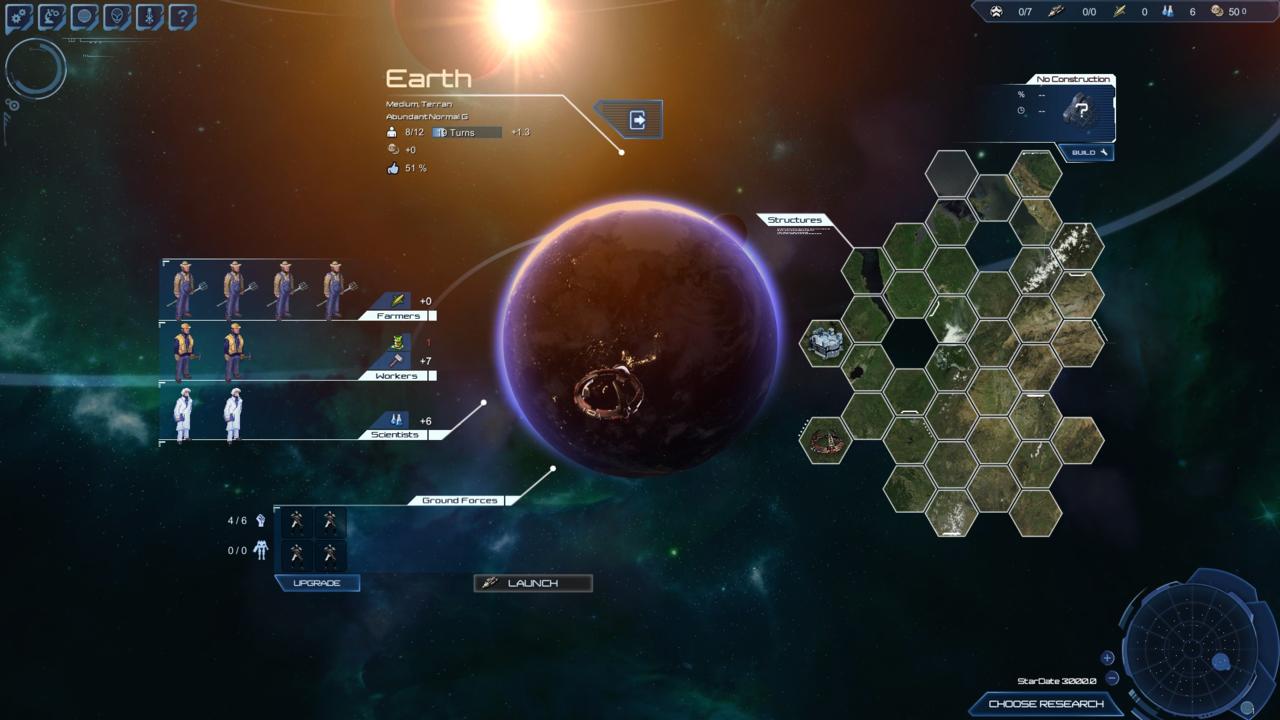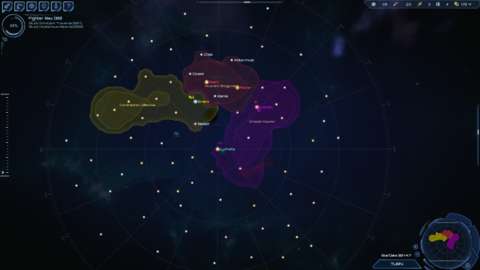A good 4X strategy game is a bit like a slow-burning fire--something to be stoked every now and again with a click of the mouse and watched through half-lidded eyes into the late hours. When that contented sort of complacency sets in, I'm more easily coaxed into "just one more turn." These empire-building games make it easier still because they tend to defer the consequences of poor moves. Mistakes amount to small hang-ups in the otherwise effortless forward momentum of upgrades and technological developments, lost in the spaces between ascending data points on one of the genre's ubiquitous end-of-game line graphs. It's only when I come out of my daze a few scaled eras later that I often find myself long surpassed by opposing empires, the graphs telling a story of steady mediocrity since, oh, sometime in the Middle Ages when production took a brief turn towards the slightly sub-optimal.
The thing is, 4X games don't have much patience for an also-ran. They're "games" in the same way that the game of thrones is a game: you win or you die, and the middle ground is really just another burial tract. And if the same goes for the crowded, largely homogenous genre they belong to, where does that leave an entry like StarDrive 2? For the most part, the game seems to be a proper execution of its developer's vision; it's worked its way up its chosen tech trees, so to speak, arriving as a sci-fi empire builder in the grand tradition. And yet, when it's time to take stock, StarDrive 2 finds itself firmly in the middle.

But 4X games always begin full of promise, at least. StarDrive 2 offers the selection of a space-faring race--always a good time, unless you pick Human--and, if you want, a complete overhauling of its prepackaged traits. The system, like many others in the game, is cribbed directly from Master of Orion, but it remains rousing and balanced. "Peerless Starfighters" might sound like a must-have bonus, but can you stomach the "Repulsive" or "Corrupt" negative trait you'll have to equip to zero out the ledgers? And then there are the races themselves: an eclectic bunch that includes Cthulhu-likes, an ursine shogunate, and a narcissistic collection of pods that speak through the hijacked brains of alien owls.
As if to further signal that you're not supposed to take the ensuing intragalactic war too seriously, there's a color commentary robot that periodically interjects to introduce the competing races in a segment called--wait for it--"racial profiling." And as if to signal that this is a terrible idea for a feature, there's also an option to turn it off. But whether you listen to the introductions or not, it behooves you to immediately start spreading out across the star map from whatever randomized homeworld you've been deposited on. Exploratory fleets can be sent across the universe with a click, revealing new planets of varying hospitality to colonize. The best ones go quick--opposing empires in StarDrive 2 gobble up territory, and they're not shy about claim jumping either.

These enemies can be held off for a time via diplomacy. Technological advancements are divided into mutually exclusive sets of three and are often differentiated by whether they provide an immediate benefit or one that scales better over a longer period of time. Researching one cordons off the other two, so the best way to snag them is through trade. That, in turn, plays out via a now-overly familiar interface, wherein resources and policies are given a unifying currency and exchanged between two empires at something resembling a fair rate. There's also a limiting "tolerance" meter that hints at a xenophobic civilian population weighing the deal behind the scenes. Combined with a capricious AI and the utilitarian feel of the diplomacy system at large, the meter mostly just contributes to StarDrive 2's gravitational pull towards war.
If the end justifies the means--and the end involves every race that isn't you being purged from the galaxy--nothing is ever really beyond the pale, is it? The enslavement and bombardment of civilian populations, consequently, are perfectly tenable according to StarDrive 2's rules of engagement (albeit partially lampshaded by the cartoonish aliens and abstractions of the game's model). The infrastructure of a colonized planet is indicated with a list of the buildings it's added, and its farming, manufacturing, and scientific output are represented. As an example, these outputs are represented for the Kulrathi Shogunate by bears holding pitchforks, pickaxes, and beakers, respectively.

To protect them, you kit out a starfleet or two. Here, StarDrive really feels like it's found its wheelhouse. All ships have a single frame housing a few different pre-existing equipment packages, but they're used more effectively when you customize their payloads yourself. The ship editor uses a lo-fi but intuitive version of EVE Online's similar interface, where armor plating, power generation, weapons, and cockpits all take up a certain amount of tiles on a planar overlay atop the ship's frame. A bigger missile launcher is surely more effective, but it'll take up valuable tiles that you might need to use for thrusters or point defenses.
If any system isn't being adequately accounted for, you find out quickly when StarDrive 2's ship-to-ship combat plays itself out. When two fleets collide on the star map, they're set down across from each other on a new screen, where they trade maneuvers and lasers semi-autonomously. A pleasant feedback loop plays so you can see how the battles resolve themselves, note deficiencies in your lineup, and run back to the hangar to draw up a suitable counter to the tech your enemy is fielding.
It isn't all quite as tidy as opposing empires trading volleys across their borders. StarDrive 2 introduces a refreshing amount of entropy to the system via third-party raids, discoverable anomalies, derelict ships, and mission pop-ups that can throw a wrench into your previous priorities. But these instances frequently mean that you need to engage in ground combat, a half-baked, grid-based affair that sees two squads march up to each other and wail away until one drops.
You can give ground units tools and abilities, too, but they don't fundamentally alter the static nature of the combat--if you need to wait 20 turns for an ability to recharge and the enemy hasn't spotted you, you might as well press "next turn" 20 times until it refreshes. This is silly, because StarDrive 2 has no pressing need to render ground combat. There's enough of a draw in the larger scale, ship-based combat and exploration as well as the thrill loot-seeker get from discovering a planet with a unique resource and scrambling to claim it first.
But even though these systems achieve competency, they've been done before (and done better) in many other games. So any praise leveled at StarDrive 2 inevitably ends up faint when it's taken alongside other entries in the sci-fi 4X genre. Is that a flaw of a navel-gazing piece of genre fare or of our own tendency to internalize lessons from an empire builder--that there can only be one winner and that existing for the sake of existing isn't enough?